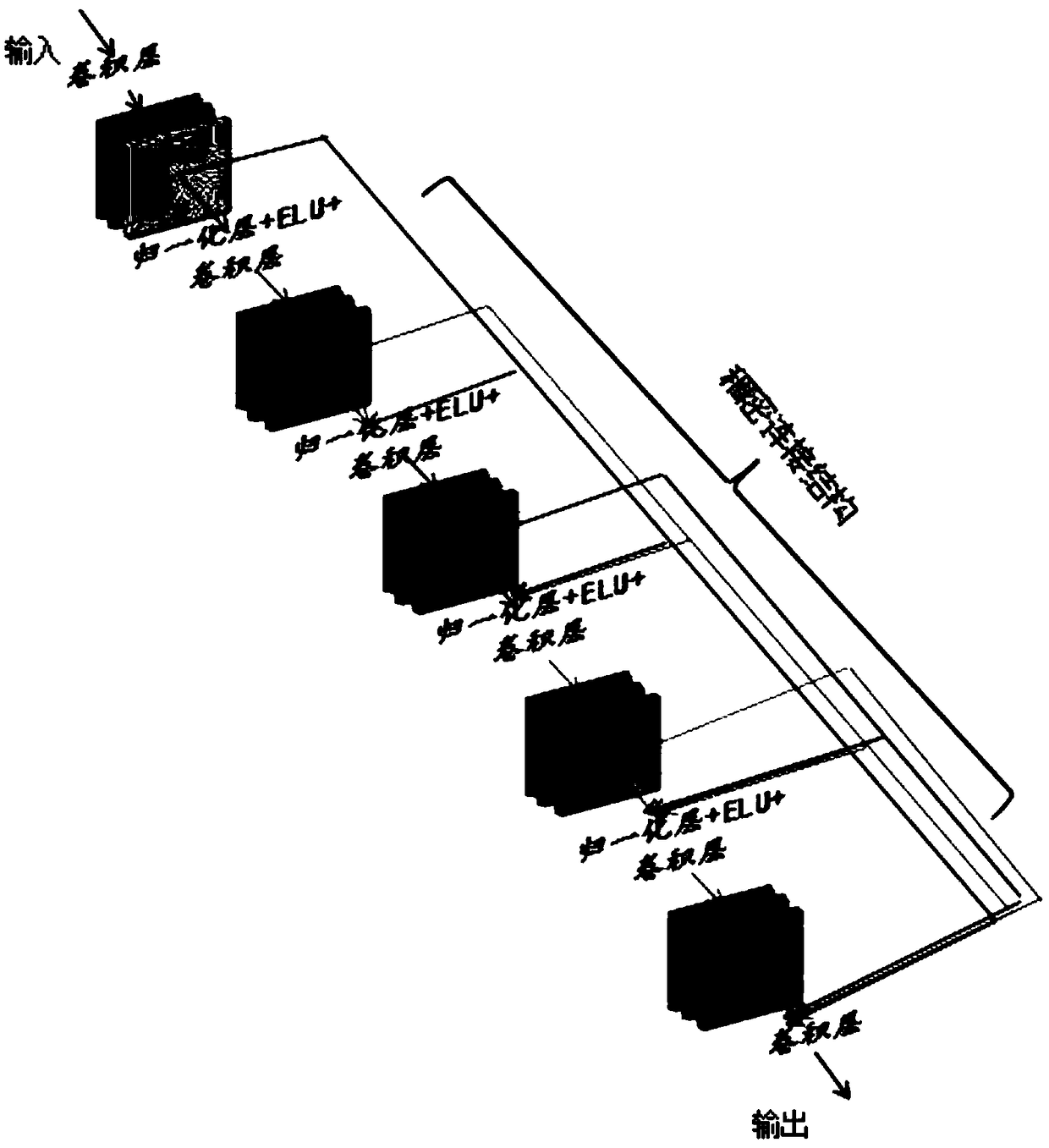3D medical image super-resolution reconstruction method based based on dense convolution neural network
A super-resolution reconstruction, convolutional neural network technology, applied in the field of image processing, can solve a large number of parameters and other problems, achieve the effect of less weight, robustness and small model
- Summary
- Abstract
- Description
- Claims
- Application Information
AI Technical Summary
Problems solved by technology
Method used
Image
Examples
Embodiment 1
[0034] A 3D medical image super-resolution reconstruction method based on dense convolutional neural network, see figure 1 , the method includes the following steps:
[0035] 101: Randomly divide the public data set of the Human Connectome Project into four parts 7:1:1:1, the first part is used as the training set, the second part is used to verify and optimize the network weights, and the third part is used to evaluate the selected hyperparameters , the fourth part is used as the test set;
[0036] 102: Divide the low-resolution three-dimensional image 320*320*256 into small blocks of 64*64*64, and use it as network input based on dense connection structure;
[0037] Wherein, the network in step 102 includes: a normalization layer, a nonlinear mapping part composed of ELU, and a convolutional layer with a growth rate k of 24.
[0038] 103: Calculate the error between the reconstructed image and the actual image, and propagate the error layer by layer from the output layer t...
Embodiment 2
[0045] The scheme in embodiment 1 is further introduced below in conjunction with specific examples, see the following description for details:
[0046] 201: Data preparation;
[0047] The first step: divide the data set, the data source is the data set released by the Human Connectome Project (Human Connectome Project).
[0048] The entire data set is randomly divided into four parts 7:1:1:1, the first part is used as the training set, the second part is used to verify and optimize the network weights, the third part is used to evaluate the selected hyperparameters, and the fourth part is used as the test set . Among them, the data sets for training, verification and testing are all composed of high-resolution images and corresponding low-resolution images. The low-resolution images are converted from high-resolution images to frequency domain by Fourier transform, and the Values in other directions other than the vector direction are set to zero to obtain a low-resolutio...
Embodiment 3
[0060] Below in conjunction with concrete data, the scheme in embodiment 1 and 2 is further introduced, see the following description for details:
[0061] 301: data preparation;
[0062] (a) Divide the data set, the data source is the HCP public data set, which contains the brain T1w structural images of 1113 patients, the image size is 320*320*256, and the spatial resolution is 0.7mm.
[0063] (b) The entire data set is randomly divided into four parts 7:1:1:1, 780 images are used as training sets, 111 images are used for verification and optimization of network weights, 111 images are used to evaluate selected hyperparameters, 111 image as a test set.
[0064] 302: Network construction;
[0065] The network structure of the embodiment of the present invention mainly includes: two convolutional layers and a densely connected structure, which will be combined with the following figure 1 , to describe in detail the network structure built by the embodiment of the present in...
PUM
 Login to View More
Login to View More Abstract
Description
Claims
Application Information
 Login to View More
Login to View More - R&D
- Intellectual Property
- Life Sciences
- Materials
- Tech Scout
- Unparalleled Data Quality
- Higher Quality Content
- 60% Fewer Hallucinations
Browse by: Latest US Patents, China's latest patents, Technical Efficacy Thesaurus, Application Domain, Technology Topic, Popular Technical Reports.
© 2025 PatSnap. All rights reserved.Legal|Privacy policy|Modern Slavery Act Transparency Statement|Sitemap|About US| Contact US: help@patsnap.com


